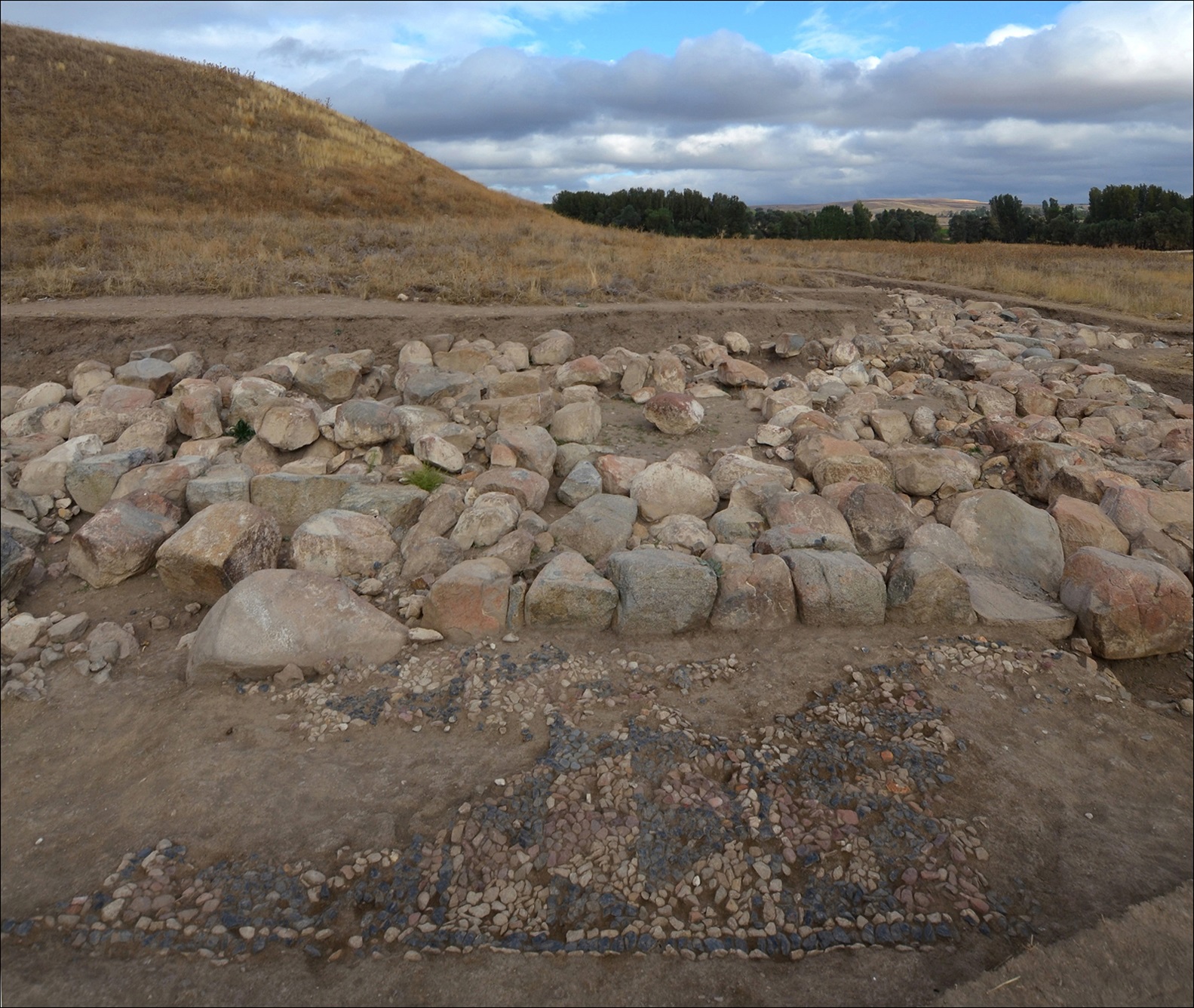Welcome to DU!
The truly grassroots left-of-center political community where regular people, not algorithms, drive the discussions and set the standards.
Join the community:
Create a free account
Support DU (and get rid of ads!):
Become a Star Member
Latest Breaking News
Editorials & Other Articles
General Discussion
The DU Lounge
All Forums
Issue Forums
Culture Forums
Alliance Forums
Region Forums
Support Forums
Help & Search
Anthropology
Related: About this forum3,500-year-old stone mosaic floor found in Turkey

A mosaic composed of natural stones has been unearthed at the ancient Bronze Age Hittite site of Usakli Hoyuk near Yozgat in central Turkey. It was first discovered in 2018 in the remains of temple to Teshub, the Hittite god of thunder and storms. The temple dates to around 1500 B.C., which makes this mosaic the oldest patterned mosaic known.
The site has been known since the early 20th century, but it was first officially explored by archaeologists in 2008. The geophysical survey indicated the presence of a large building of Hittite origin. Excavations between 2013 and 2015 revealed a monumental temple with walls of roughly-hewn megalithic stone blocks built without mortar. Small but complete pieces of pottery — an unguent vase, a conical cup –typical of ones found at Late Bronze Age Hittite temples identified its purpose.

The mosaic pavement was located in a courtyard of the temple. It is ten feet wide and 23 feet long and today consists of 3,147 stones in shades of white, red and black. They are irregular in size were laid flat onto a beaten earth floor. The stones were placed in contrasting color arrangements creating geometric patterns.
Other Hittite-era paved floors and courtyards have been found at sites in Anatolia, but they were paved with flagstones or compacted pebbles, not deliberately arranged to form geometric designs of different colors. The Usakli Hoyuk floor is unique both in the size of the medium size of the stones (neither large flagstone nor small pebble) and in their careful selection and installation based on shape and color.
More:
http://www.thehistoryblog.com/archives/62338
2 replies
 = new reply since forum marked as read
Highlight:
NoneDon't highlight anything
5 newestHighlight 5 most recent replies
= new reply since forum marked as read
Highlight:
NoneDon't highlight anything
5 newestHighlight 5 most recent replies
3,500-year-old stone mosaic floor found in Turkey (Original Post)
Judi Lynn
Sep 2021
OP
Martin68
(26,546 posts)1. Wow! That is very interesting.
Kali
(56,493 posts)2. that era was interesting
I have been near that site, to Boğazkale, where the first international peace treaty was signed between Hattusa and Egypt. it was just as Bush/Cheney went after Iraq. it was a weird time to have a local archeologist explaining the treaty while US planes were flying overhead.